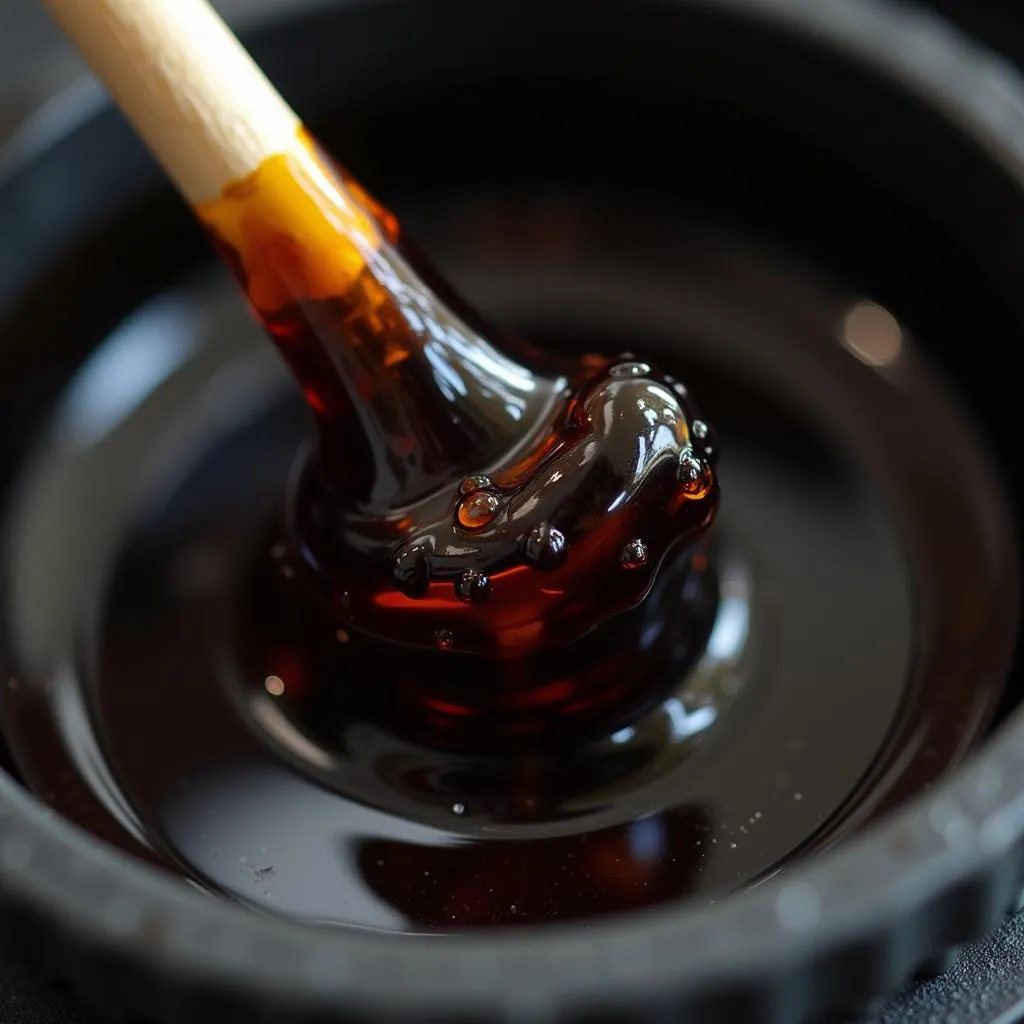Motor oil is the lifeblood of your engine, keeping all the moving parts running smoothly. And just like your own blood, the color of your motor oil can tell you a lot about its health and the health of your engine. So, what color should your motor oil be? Let’s dive in and decode the rainbow of motor oil colors.
The Ideal: Fresh, Honey-Colored Oil
Brand new, fresh motor oil typically has a honey-like, amber color. This light hue indicates that the oil is clean and free from contaminants. It’s packed with additives designed to lubricate, clean, and protect your engine.
Darkening Over Time: A Gradual Transition
As your engine runs, the oil picks up dirt, debris, and combustion byproducts. This naturally causes the oil to darken over time. A gradual transition from honey to a darker brown is normal and doesn’t necessarily signal a problem.
 Dark Brown Motor Oil
Dark Brown Motor Oil
When to Worry: Black Motor Oil
While some darkening is expected, jet black motor oil is a cause for concern. This often indicates the oil is heavily saturated with contaminants and is no longer effectively lubricating and protecting your engine. Black oil can be a sign of:
- Infrequent oil changes: Delaying your oil changes allows contaminants to build up to excessive levels.
- Engine wear: As engine components wear down, metal particles can contaminate the oil.
- Extreme driving conditions: Stop-and-go traffic, hauling heavy loads, and high temperatures can accelerate oil degradation.
 Checking Engine Oil with Black Color
Checking Engine Oil with Black Color
Red Flags: Milky or Metallic Oil
Discovering milky or metallic-looking oil on your dipstick warrants immediate attention.
- Milky, Tan, or Frothy Oil: This often suggests coolant is leaking into the oil, potentially due to a blown head gasket or a cracked engine block. This is a serious issue that requires immediate professional attention.
- Metallic Specks in the Oil: Shiny, metallic particles in the oil indicate excessive wear and tear on engine components. This could be a sign of severe engine damage.
Trust Your Senses: The Smell and Texture Test
Along with color, the smell and texture of your motor oil can also offer valuable clues:
- Burnt Smell: A strong, acrid, burnt odor often indicates the oil is overheating and breaking down.
- Gritty Texture: If the oil feels gritty to the touch, it likely contains a significant amount of contaminants.
Keeping Your Engine Healthy: The Importance of Regular Oil Changes
Regular oil changes are essential for maintaining a healthy engine. Fresh oil ensures proper lubrication, prevents excessive wear and tear, and helps keep your engine running smoothly for years to come. Refer to your vehicle’s owner’s manual for the recommended oil change intervals.
 Car Maintenance: Oil Change Service
Car Maintenance: Oil Change Service
In Conclusion: Color Matters
The color of your motor oil provides valuable insights into the health of your engine. While a gradual darkening is normal, sudden changes in color, especially to black, milky, or metallic, should never be ignored. Regular oil changes and paying attention to your oil’s color are simple yet crucial steps in protecting your investment and ensuring a long lifespan for your vehicle.

